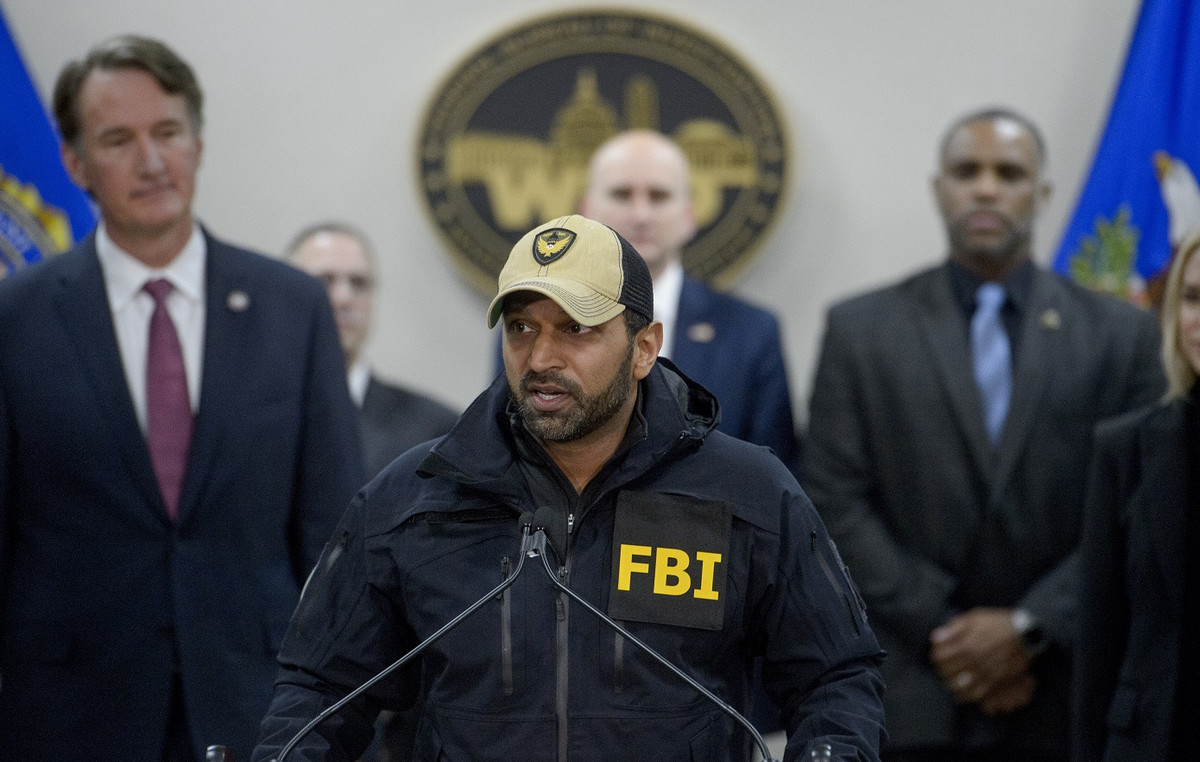Relations between India and Pakistan are deteriorating after a deadly attack in the disputed region of the Jammu and Caxemira Himalayan that left more than 20 tourists dead, increasing the fears of a new military climbing among nuclear rivals.
Nova Delhi relegated his ties with Islamabad, called his main diplomat, first suspended his involvement in a crucial treaty of water sharing and closed a major border passage, among other punitive measures after what was the worst civil attack in the region in years.
All, except one of the 26 dead, were Indian citizens, causing a new wave of excitement in a region claimed by both Pakistan and India that has been the epicenter of a frequently violent territorial dispute between the two countries.
For decades, several domestic militant groups, demanding independence for Caxemira or the incorporation of the area into Pakistan, fought against the Indian security forces, leaving tens of thousands of dead in violence.
What happened in Pahalgam?
On Wednesday (23), India accused Pakistan of supporting terrorist groups in the region, after a little known armed group called The Resistance Front claimed responsibility for the attack. Pakistan denied any involvement.
On Tuesday (22), gunmen opened fire on tourists in a popular travel destination in the mountainous region of Pahalgam, in Caxemira administered by India, a rare attack on tourists. At least 25 Indian citizens and a Nepalese citizen were killed in the massacre, which occurred in a Prado in the Baisaran Valley – which is only accessible on foot or on horseback.
Witnesses described scenes of horror as the gunmen approached, opening fire against tourists in the short distance. Some remembered how the men were selected and shot. Other survivors who spoke to local media said gunmen accused families of supporting Indian Prime Minister Narendra Modia before shooting.

Massacre Photos and Videos – showing lifeless bodies scattered on the floor and loved ones in mourning screaming with fear – reverberated on social networks, a vivid portrait of pain and suffering supported by families whose vacation ended in horror.
A little -known militant group called The Resistance Front claimed responsibility for the attack on social networks, expressing discontent with “outsiders” who settled in the region and caused a “demographic change”. THE CNN You cannot verify independently your claim.
Indian authorities have increased the police and military detachment to the region and staff are looking for perpetrators. Cashmira’s resistance, also known as The Resistance Front (TRF), is a relatively new militant group that has claimed civilian civilian civilians in recent years.
Who is the resistance front?
It is not known much about them. The TRF declared its existence in 2019 through the Cryptographed Telegram messaging app, after claiming liability for a grenade attack in the largest city of Jammu and Caxemira, Srinar, according to Think-Tank Research Observer Research Foundation (ORF), based in New Delhi.
The emergence of the TRF is portrayed as the “beginning of a new indigenous resistance in Caxemira,” said ORF in 2021. India classified TRF as a “terrorist organization” and linked it to the Islamic group prosperous Lashkar-e-Tayyiba, which was behind deadly attacks in Mumbai in 2008 and has a much higher profile.
“The TRF is positioned as a force of political resistance, born in Caxemira and for Caxemira, against illegal occupational forces, having no figure or leadership centered jihadist,” according to the Orf.
Why is cashmira important to India and Pakistan?
Caxemira is one of the most dangerous conflict points in the world. Claimed in its entirety by both India and Pakistan, the mountainous region has been the epicenter of a frequently violent territorial dispute among nuclear neighbors for over 70 years.
The issue caused three wars between countries and a border called the control line divides the region between New Delhi and Islamabad. The tensions between Hindu majority India and the Muslim majority Pakistan about the disputed region have increased in recent years, after Modi’s government revoked its constitutional autonomy in 2019, placing it under direct control of New Delhi.

Although the Indian government stated that militantism has decreased amid the strong military presence, the attacks continue to torment the region, causing agitation and protests.
Meanwhile, there has been strong media censorship and blackouts in communications. Analysts say Tuesday’s massacre destroyed the illusion of calm that Modi designed about the region and raises questions about how such a security failure could have occurred in one of the world’s most militarized zones.
How did India and Pakistan answer?
India has not publicly blamed any groups for the attack, but justified its retaliatory actions in response to the alleged “support for transfronist terrorism” of Pakistan.
Pakistan denied any involvement and summoned a national security meeting on Thursday to discuss the next steps.
Nova Delhi announced several punitive measures against Islamabad one day after the attack, including the closing of a major border passage and greater restrictions on the limited seen to Pakistani citizens. It also expelled military, naval and air counselors from the high Pakistani commission in Nova Delhi.
But perhaps among the most significant retaliation so far is the suspension by Nova delhi of its role in the Indian water treaty, an important pact of water sharing between India and Pakistan in force since 1960 and considered a rare history of diplomatic success between the two conflicting neighbors.
The huge Indian River system, which supports subsistence means in Pakistan and northern India, originates from Tibet, flowing through China and the cashmire controlled by India before reaching Pakistan.
“The reduction of diplomatic ties and the suspension of the Indian water treaty are not good signs for stability in the region,” said Fahd Humayun, assistant professor of political science at Tufts University.
“The suspension not only represents a violation of the obligations of the international treaty, but the right to water as a lower riverside country is seen as a matter of national security by Pakistan and its suspension will be interpreted as a belligerent action,” he added.
Pakistan Energy Minister Awais Leghari called the measure on Wednesday “an act of war.” “Every drop is ours by right, and we will defend it with full force – legal, political and globally,” said Leghari.
How is the situation in cashmir?
Thousands of people went to the streets to condemn deadly attacks, while entrepreneurs express concerns about their impact on the popular tourist destination during the high season. “There was 80-90% cancellation of all our excursions and trips in the coming days and weeks,” said Mohsin, who uses only one name and manages a tour company in the region. “We are in complete monetary loss. I may have to move to another business if it continues,” he added.
Schools and companies resumed activities after being closed on Wednesday in many parts of Caxemira, while manifestations of solidarity broke out in Lal Chowk, the city square of Srinagar.
“We couldn’t just sit down and watch. We came to show emotion, solidarity and condemn the murders,” said the local resident Umar Nazir Tibetbaqan. “Our protests (on Wednesday) were a signal for everyone that all cashmires are with the country at this time of mourning,” he added.

Meanwhile, anti-patistan protests broke out in the Indian Capital Delhi and in many other cities, increasing fears of feeding anti-pile and anti-mulman feelings in Hindu majority.
What happens now?
All eyes are now facing Nova Delhi and Islamabad will answer. And the question, analysts say, is not whether there will be military retaliation, but when.
“Modi will have a very strong, if not irresistible, political compulsion to retaliate hard,” said Arzan Tarapore, a researcher at the Stanford University Security and International Cooperation Center.
“We don’t know what it would be like, and it’s a bit of no sense to speculate right now, but I think the Balakot crisis in 2019 provides some clues about what to observe in India’s response,” Tarapore said, referring to Nova delhi’s response to a militant attack on Indian troops that killed at least 40 paramilitaries in India-administered cashmir.
Nova Delhi retrained launching air strikes against Pakistan, the first raid of this type in its territory since the 1971 war.
“Will the key question be whether they seek to impose more significant and tangible costs on terrorist groups, including attacking their leadership or central facilities? said Tarapore.
“India’s military capabilities have grown since 2019, so the country may feel encouraged to face larger targets,” he added.
And while Indian military power has grown in recent years, Pakistan has been shaken by political instability and economic disorder.
However, Humayun, the Tuft teacher, said that if the Indian government chooses to resort to military action, there are “all the reasons to believe that Pakistan will respond in the same way.”
“In the absence of strategic containment or third party intervention, the chances of an uncontrolled climb in the coming days are not insignificant,” he said.
This content was originally published in deadly attack on Caxemira aggravates tensions between India and Pakistan on CNN Brazil.
Source: CNN Brasil
Bruce Belcher is a seasoned author with over 5 years of experience in world news. He writes for online news websites and provides in-depth analysis on the world stock market. Bruce is known for his insightful perspectives and commitment to keeping the public informed.







